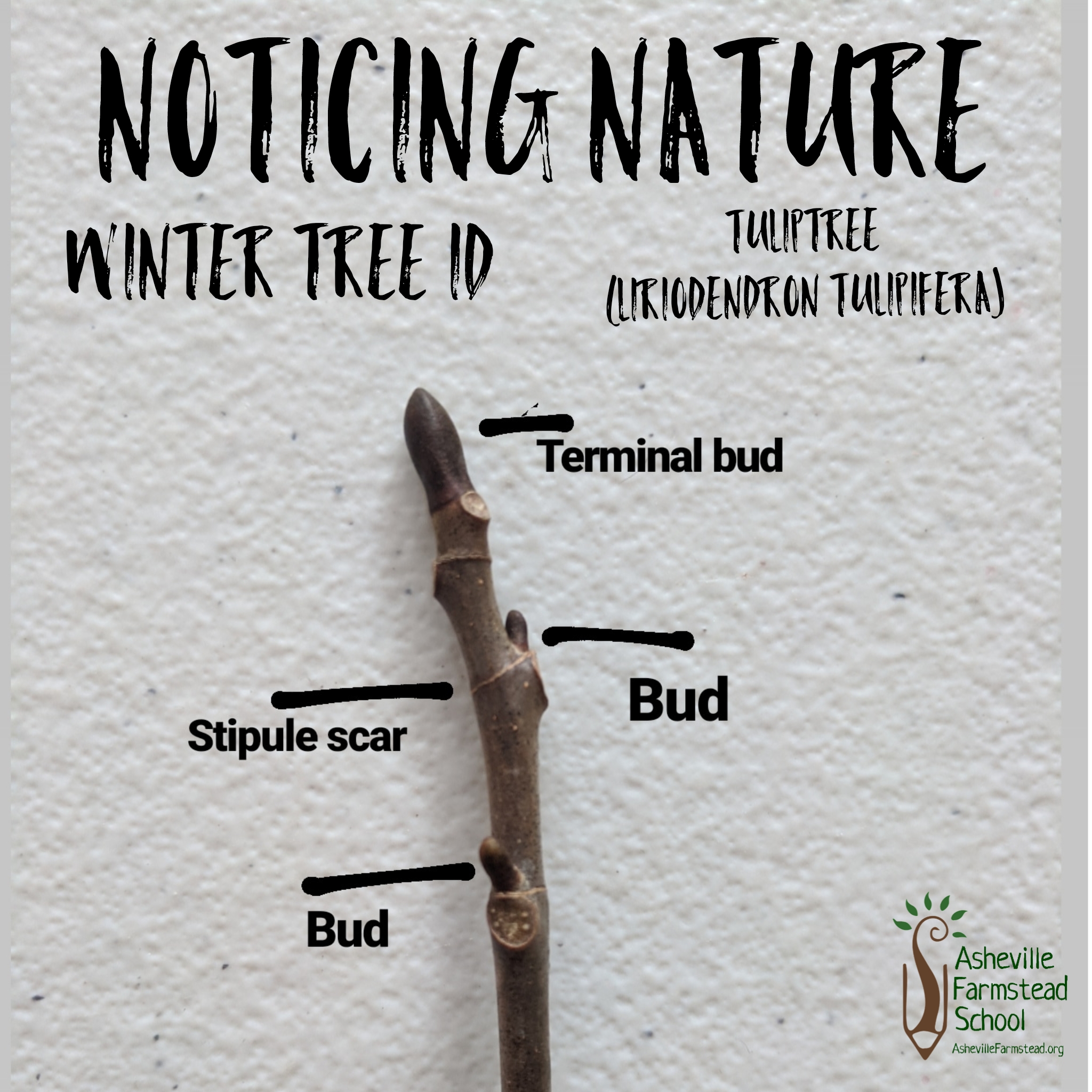NOTICING NATURE | 3 WINTER TREES
 Identifying trees in the winter without leaves present can be very challenging! You need to use clues from the bark and stems to figure it out. One of the first clues to look for is whether the leaves have an alternate or an opposite arrangement (of course in the winter you are looking at the buds or leaf scars instead of the actual leaves). Alternate means that each leaf grows from a different point on the stem. Opposite means that two leaves grow from the same point, directly across from each other. The scientific term for this is phyllotaxy.
Identifying trees in the winter without leaves present can be very challenging! You need to use clues from the bark and stems to figure it out. One of the first clues to look for is whether the leaves have an alternate or an opposite arrangement (of course in the winter you are looking at the buds or leaf scars instead of the actual leaves). Alternate means that each leaf grows from a different point on the stem. Opposite means that two leaves grow from the same point, directly across from each other. The scientific term for this is phyllotaxy.
Discover more tree facts below as we share the 3 winter trees to notice now.
Black Walnut (Juglans nigra)
The twigs of the Back Walnut tree are dark brown with alternating leaf scars. The buds are greyish and fuzzy. Many people describe the leaf scar as looking like a "monkey face"!

Tuliptree (Liriodendron tulipifera)
The twigs of the Tuliptree are red-brown in color and often have a waxy appearance. The buds are alternate, ending with a larger terminal bud shaped like a "duck bill". The stipule scar wraps around the entire twig at each bud, which is not common to see and therefore makes it a great clue to identify these trees! Another important thing to look for is the presence of round seed clusters still high in the branches.

Bitternut Hickory (Carya cordiformis)
The easiest way to identify this tree in the winter is by noticing the sulfur yellow color of it's buds. Yellow buds are very unique! It's buds are alternate with a long terminal bud. The buds are valvate, meaning that they are composed of two scales that meet in the middle like a valve. This characteristic can be so pronounced in the terminal bud that it can look like two separate tiny leaves.

